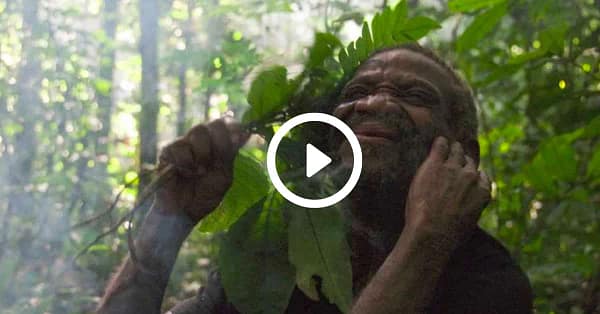The Mbuti
Epulu, Congo Rainforest / DRC 2009-2010
For over thousands of years, the Mbuti Pygmies lived sustainably as hunter-gatherers in the world’s second largest rainforest, in what is presently the Democratic Republic of the Congo. Through their ability to change and adapt within their forest habitat, they survived the Congo’s devasting history of war, disease and resource exploitation. But now, as globalization and the demands of contemporary economics, politics, and technology are causing irreversible deforestation, the Mbuti’s existence is seriously threatened, they cannot survive without the forest, which is the source of their food, shelter, identity and connection to spirit.
In 2009, the Mbuti asked the TTF to organize an art exhibition that would foster international awareness and appreciation of the threatened Congo rainforest and the indigenous culture of the Mbuti. The award winning video, Mbuti:Children of the Forest, is their message and plea to the world in their own voices. Photographs and documentary footage taken at the Okapi Wildlife Reserve by Molly Feltner in 2010 form the centerpiece of the exhibition. These powerful images, along with the traditional artifacts used by the Mbuti in their daily lives and the work of internationally known photographer and filmmaker Eliot Elisofon, offer a window into the Mbuti’s symbiotic relationship with the rainforest. This museum quality exhibition was made possible through donations and the expertise of Santa Barbara Museum of Art staff.
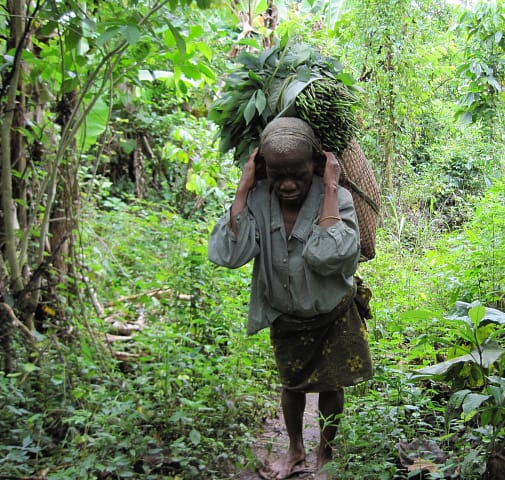
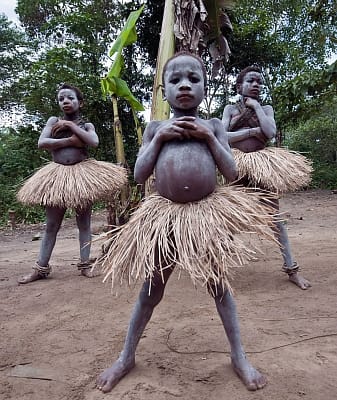
This project seeks to bring international recognition to the beauty and importance of Mbuti art, music, dance, and showcase their indigenous response to life in order to help defend the Mbuti from enslavement, displacement, murder and genocide. Unfortunately, the Mai Mai militia occupied the Okapi Wildlife Reserve shortly after our documentation was completed. Many people were murdered and the okapi slaughtered. No one has been able to return to this area of the DRC. It is the urgent request of the Mbuti for this exhibition to travel internationally in academic environments to raise awareness for the protection of the forest and forest peoples.
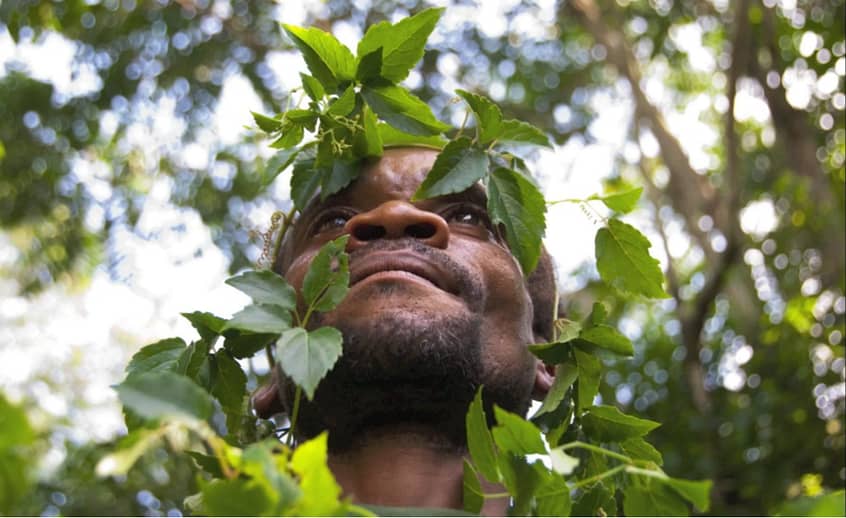
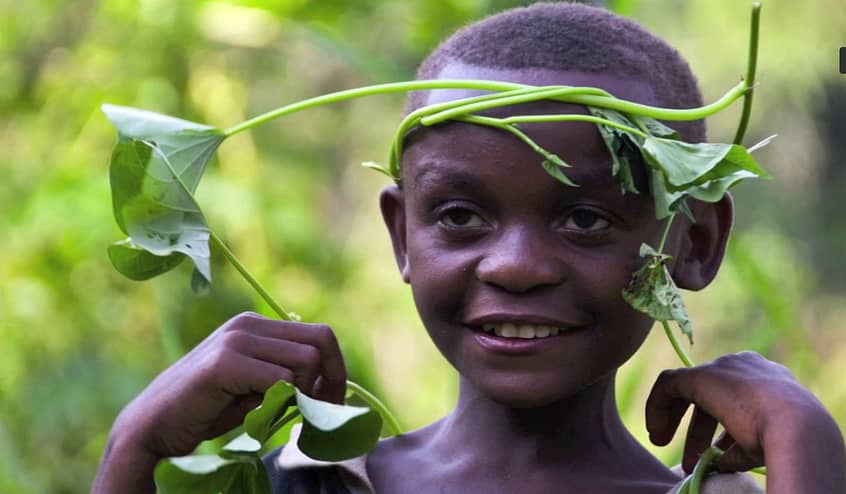
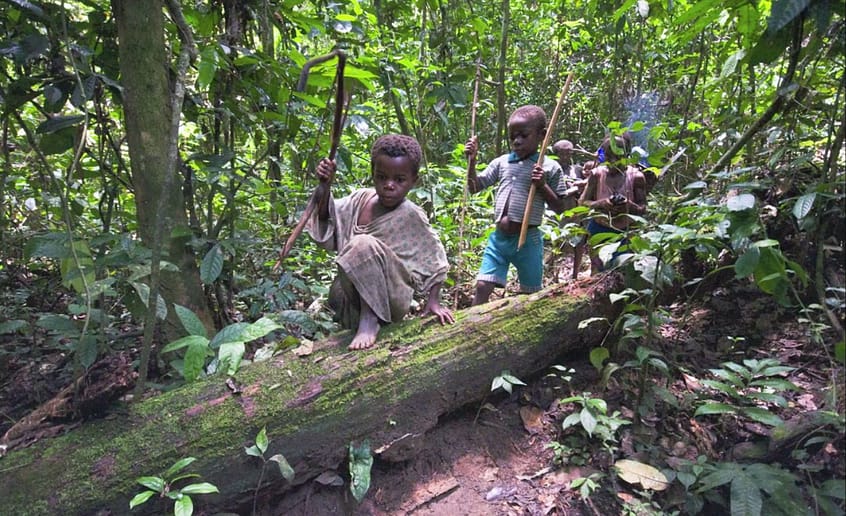
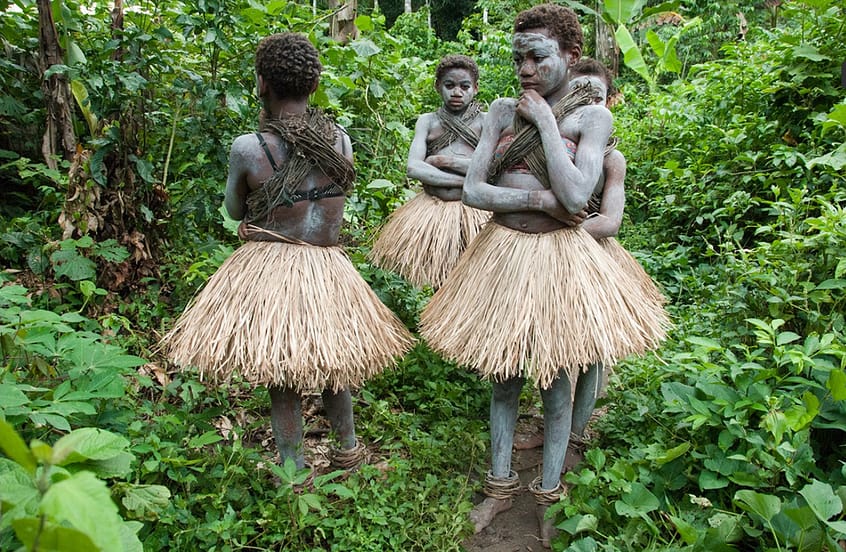
Molly's images and Tribal Trust Foundation was featured in the Summer 2021 edition of "espero" magazine (a German publication).
Click here to learn more! (see pages 24 and 34).
Photographic Exhibition
MBUTI: Children of the Forest
Project by the Tribal Trust Foundation
Anneliese Schools, Laguna Beach, CA
EXHIBITION SUMMARY:
This succinct photographic exhibition and accompanying short film explore the sustainable culture of the Mbuti, the Pygmy hunter-gatherers of the Congo Rainforest. An international traveling exhibition geared toward academic institutions and university museums, Mbuti, Children of the Forest provides a window into the lives of a people who have maintained a symbiotic relationship with their environment for millennia. The exhibition offers viewers critical insight into the importance of living in balance with the planet.
The Congo Rainforest is the second largest rainforest in the world. This grand ecosystem is disappearing at an alarming rate, threatening the survival of the plants, animals and people who live there. This is a crisis that can be stopped. The exhibition will provide a critical tool to encourage global support for conservation of our valuable natural resources. This international initiative will foster government respect and protection for the Mbuti, helping to insure long-term support for sustaining their hunter-gatherer way of life
The images highlight the Mbuti living in the rainforest as they preserve and celebrate an enduring connection to the land. Photographer Molly Feltner provides never-before-recorded images of traditional celebrations as well as examples of the daily way-of-life among this indigenous people who epitomize sustainable living. Additionally, three rare images from more than half a century ago by noted photographer and filmmaker Eliot Elisofon (1911-1973) reflect the permanence and strength of the Mbuti way of life. Until recently, virtually nothing has changed for this peaceful people.
The 5-minute film, produced by Molly Feltner, provides a vision of the equatorial rainforest, its people, and the magical world of giant trees, magnificent butterflies, and almost mythical animals such as the okapi and dwarf elephants. The sounds of the Mbuti culture reflected in their music and language add depth and dimension to the film.
The exhibition includes an optional array of framed three-dimensional art and artifacts used and/or produced by the Mbuti people.
The Mbuti exhibition was initially organized by the Tribal Trust Foundation with the support of the Santa Barbara Museum of Art (SBMA); Karen Sinsheimer, SBMA Curator of Photography; and Molly Feltner, photographer. It has traveled to several venues and it was most recently on view at Pacifica Institute over the summer months and extended through September.
ARTIST BIOGRAPHIES
MOLLY FELTNER is a photographer, award-winning writer, and multimedia producer. Her writings and photos have appeared in National Geographic Traveler, USA Today, and the Boston Globe Sunday Magazine, among others. She is currently living in Africa and working as a photographer for several NGOs located in Rwanda, Congo, and Uganda.
ELIOT ELISOFON was an internationally known photographer and filmmaker whose enduring visual record of African life from 1947 to 1972 was published in magazines such as Life and the National Geographic. As a filmmaker, he worked on film and television projects including the Black African Heritage Series (1972), a four-part documentary on African arts and cultures. Elisofon’s association with the National Museum of African Art began as a founding trustee in 1964. Upon his death in 1973, Elisofon donated his African-materials to the museum, including over 50,000 black-and-white negatives and photographs, 30,000 color slides, and 120,000 feet of motion picture film and sound materials. The bequest became the foundation for the Eliot Elisofon Photographic Archives.












